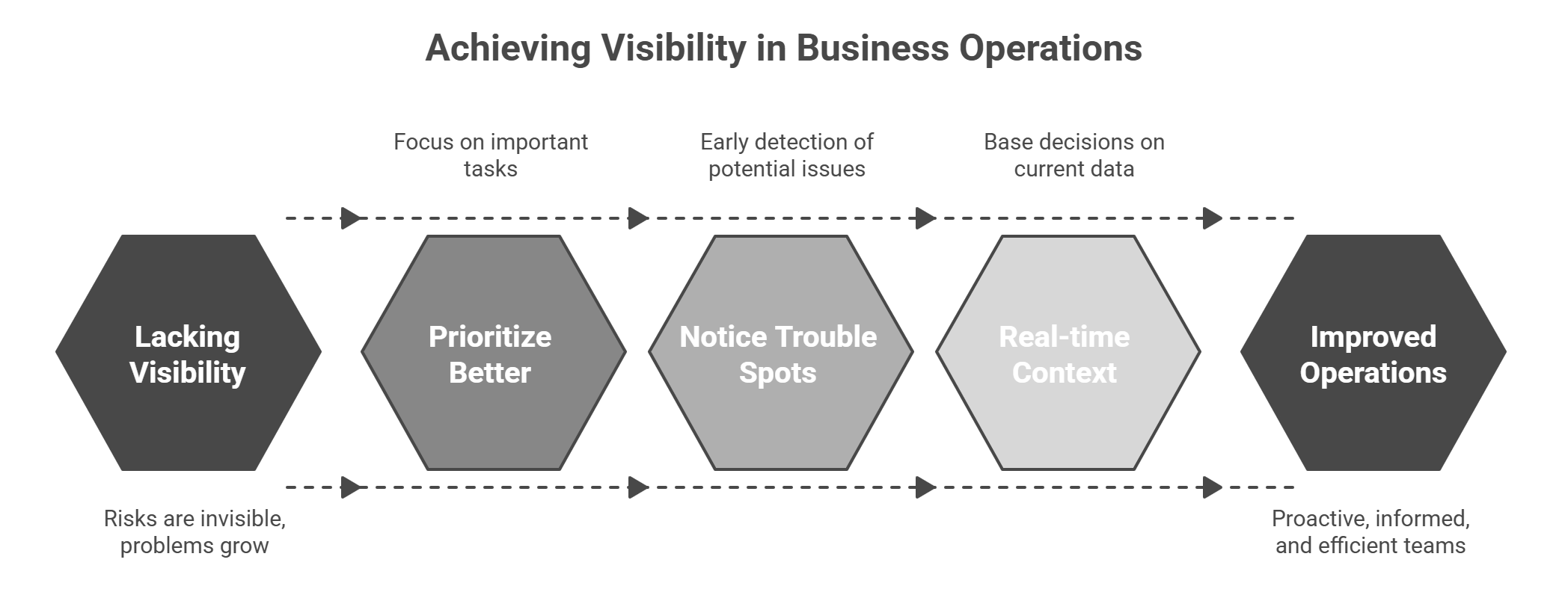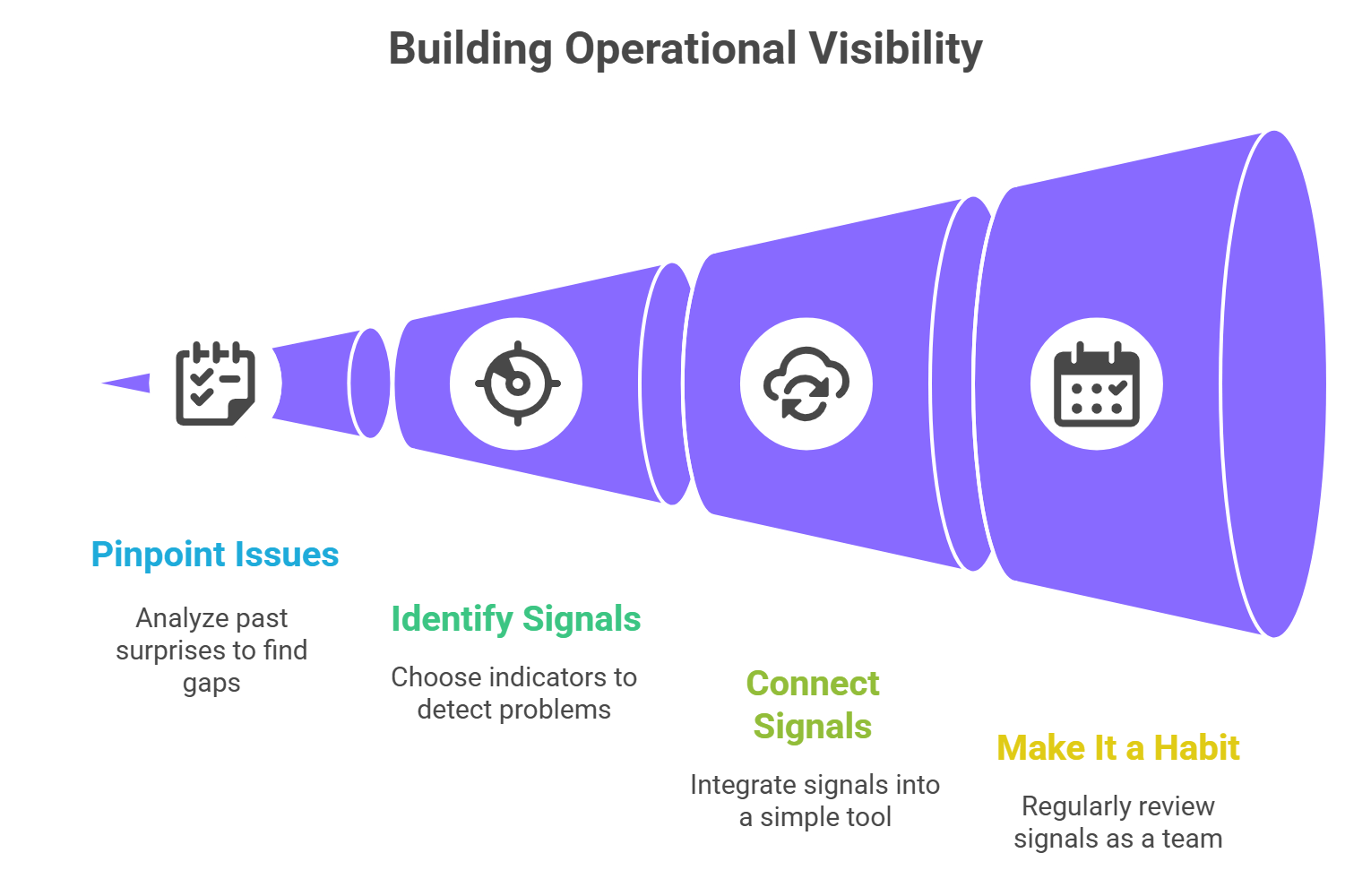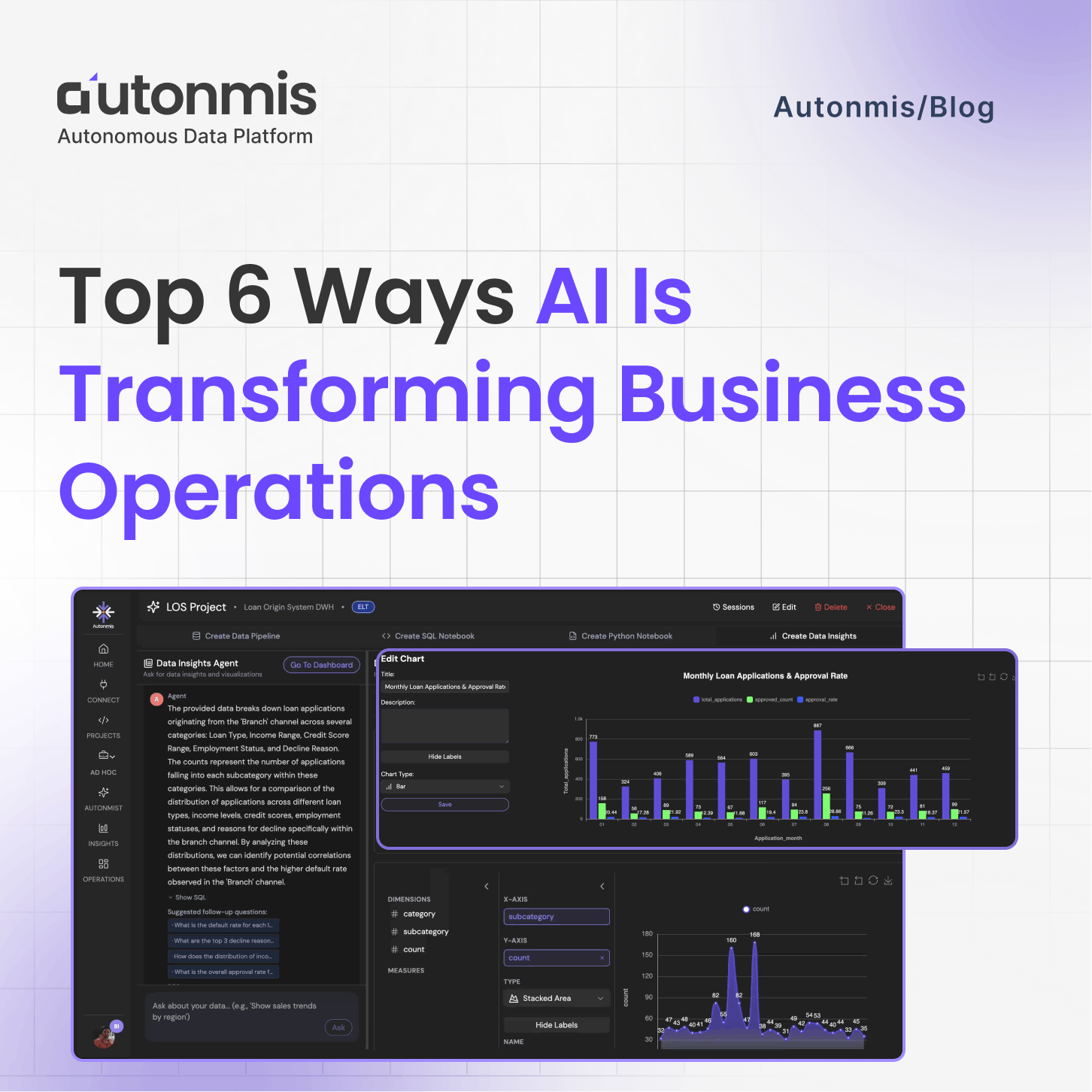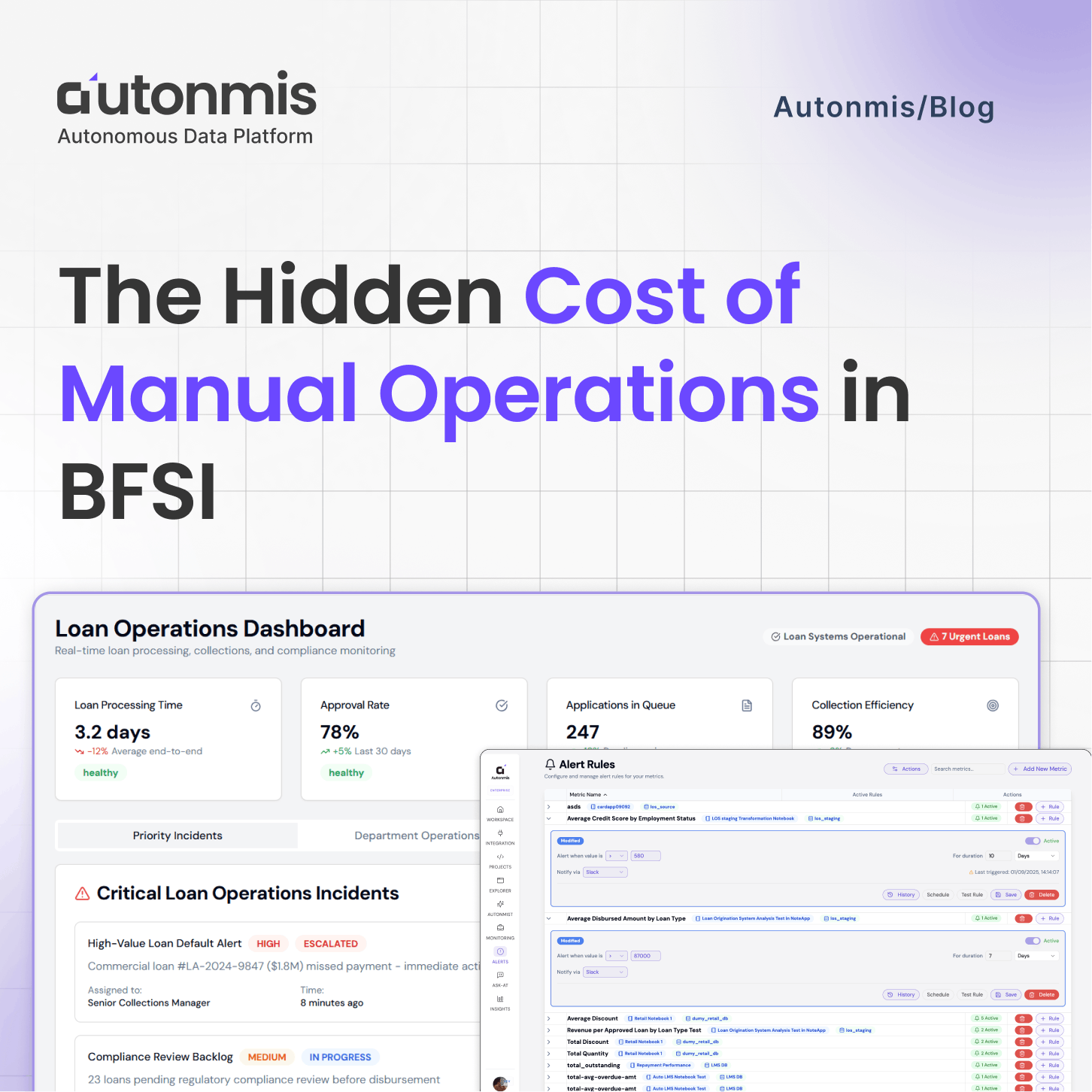7/23/2025

AB
What is Operational Visibility in Business?
Discover the power of operational visibility in business. Learn how real-time insights can transform your team's performance and prevent costly delays.

A few years back, I was working with a team that missed three product deadlines in a row. It wasn’t that people weren’t working hard. In fact, they were putting in more hours than ever. But things were slipping - quietly, in places we weren’t looking.
We didn’t have a visibility problem because we lacked data, we had plenty. The problem was, we couldn’t see what was happening when it mattered.
That was the moment I learned what is operational visibility really all about.
What Does Operational Visibility in Business Really Mean?
Operational visibility in business is the ability to see how your teams, systems, and workflows are performing - while they’re working. Not at the end of the month, not in a postmortem. In real time.
It’s not just about reports or dashboards. It’s about knowing, with clarity, when work is moving well, and when it's not. It's seeing the friction points, resource bottlenecks, and missed handoffs before they impact your customers or your goals.
It’s the kind of awareness that helps you respond early and build calm, confident operations.
Why Visibility in Business Operations Matters
Most teams are moving quickly. There’s pressure to ship, hit targets, and serve customers. When something breaks, you’re often too deep in the weeds to see it coming.
That’s when visibility in business operations really shows its value.
When you have it:
- Teams can prioritize better
- Managers notice trouble spots early
- Leadership decisions are based on real-time context
Without it:
- Risks are invisible until they hit
- Small problems grow into big ones
- Everyone spends more time reacting than improving

Checkout: How to Implement RAG in Business Operations: Step-by-Step Guide
A Real Example: Visibility That Changed a Team
One SaaS team I worked with had strong people, decent processes, and a solid product. But projects still fell behind, and customer complaints kept sneaking up on them.
They didn’t need more meetings. They needed operational visibility in business - the kind that connects the dots between what engineering is doing, how support is responding, and what the customer is feeling.
So they linked a few tools (Jira, Intercom, and Git) into a weekly report with just a handful of signals: sprint progress, ticket volume by feature, and incident trends.
They didn't overhaul their stack. They just built a clear line of sight into the moving parts.
Within a month, delivery got tighter. Support had fewer repeats. And execs were no longer asking, “Why didn’t we see this coming?”
Common Signs You Don’t Have Visibility in Business Operations
You might think you’re set because your team has dashboards or KPIs. But the signs of poor visibility show up in small ways:
- You’re surprised by delays or customer complaints
- Teams can’t agree on what “done” means
- Managers are unsure where the bottlenecks are
- Data is there, but no one trusts it
These are cues that your business might be flying a bit blind.
How to Start Building Operational Visibility in Business
Forget about enterprise-level transformation projects. This isn’t about buying a new platform or overhauling your stack.
You can build operational visibility in a way that’s simple, fast, and grounded in how your team already works.
Step 1: Pinpoint What You Can’t See
Look at the last three issues that surprised you. Was it a timeline slipping? A spike in bugs? A handoff that broke down?
That’s your first visibility gap.
Step 2: Identify Useful Signals
Pick a few signals that can help you catch similar problems next time. For example:
- Work in progress vs. team capacity
- Customer ticket trends
- Time tasks spend stuck or blocked
You don’t need perfect data. You need early clues.
Step 3: Connect It Somewhere Simple
Even a shared doc or weekly snapshot can work - as long as it’s updated automatically and people look at it.
Avoid complex dashboards that no one checks.
Step 4: Make It a Habit
Carve out 20 minutes a week to review the signals together. Not as a status update - but as a shared check-in. What’s going well? What feels off?
This is where operational visibility in business becomes a habit - not just a report.

Checkout: How Business Intelligence Helps Improve Decision Making
What Good Operational Visibility Looks Like
If you're wondering how to tell if you’re on the right track, here are a few outcomes that suggest you’re building it right:
- Teams raise risks earlier
- Delivery timelines become more predictable
- Fewer surprises in customer support
- More time spent improving, less time firefighting
You don’t need a huge system to get there. You just need the right signals, seen at the right time, by the right people.
Final Thought
Most businesses don’t struggle because of a lack of data. They struggle because they can’t see the right things soon enough to act.
Understanding what is operational visibility isn’t about chasing trends. It’s about creating a calm, clear picture of how work is really happening - so your teams can stay aligned, responsive, and in control.
It won’t solve every problem. But it will help you stop solving the same ones over and over again.
And in most teams, that’s where real progress starts.
Recommended Learning Articles

10/23/2025
Top 6 Ways AI Is Transforming Business Operations

9/22/2025

AB
The Hidden Cost of Manual Operations in BFSI
Actionable Operational Excellence
Autonmis helps modern teams own their entire operations and data workflow — fast, simple, and cost-effective.